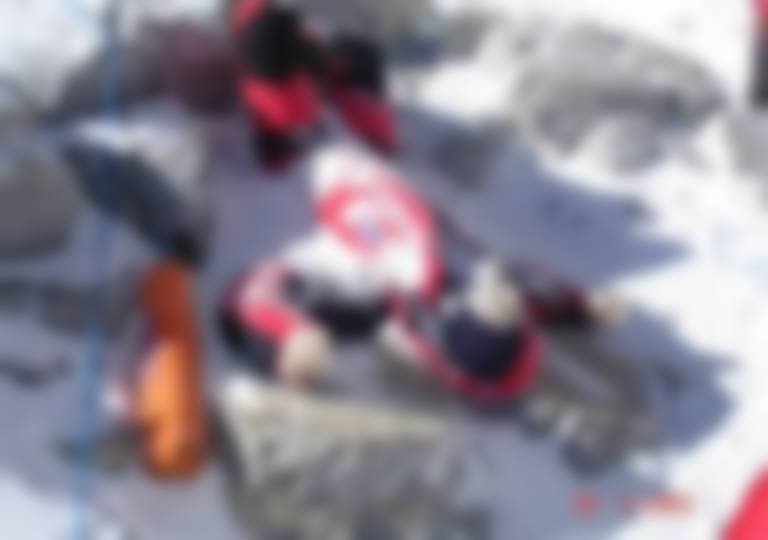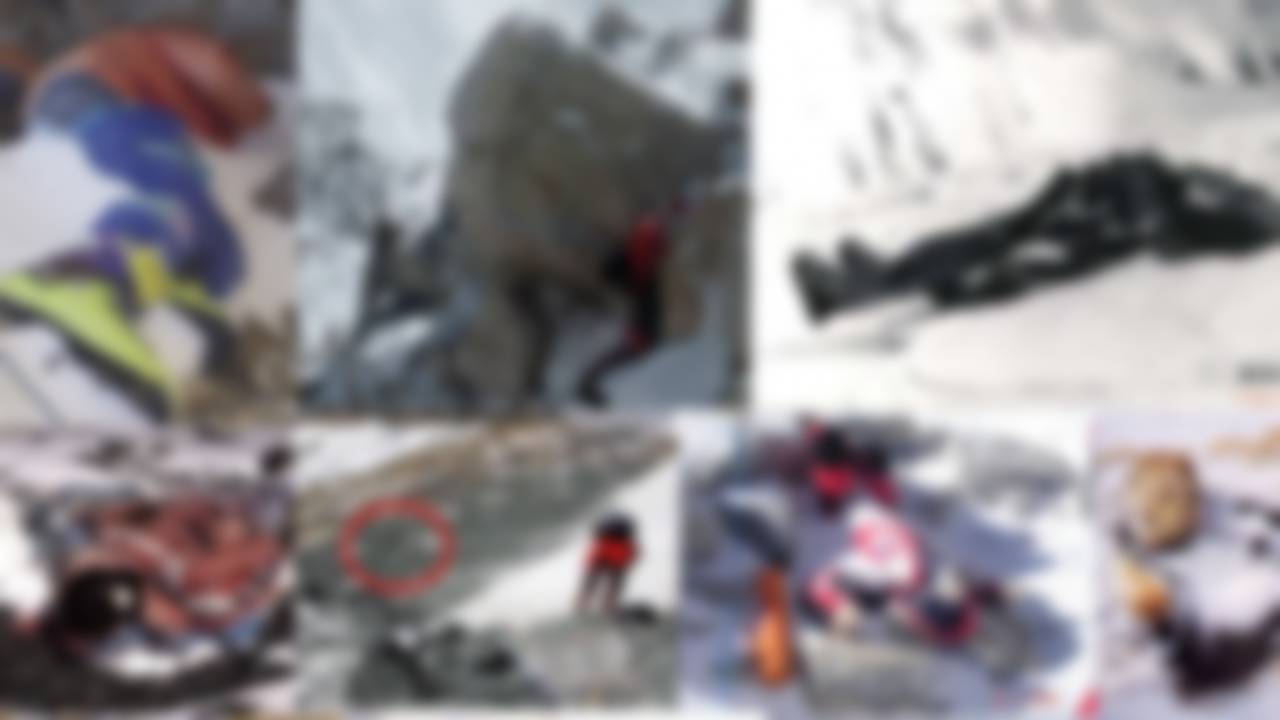Mount Everest is undoubtedly the most imposing mountain on Earth, and as such, it holds many stories that can send chills down anyone’s spine, even the most seasoned adventurer or mountaineer. One of these chilling stories is the disturbing fact that certain landmarks on the mountain are actually the bodies of climbers who perished while attempting to conquer it.
The Danger of Climbing Mount Everest

Mount Everest is the highest peak above sea level, standing at 8,846.4 meters (29,031.7 feet). Reaching its summit is an achievement worthy of remembrance, as very few have managed to do so, while many others have lost their lives trying. What is most unsettling is that many of those who have perished remain on the mountain, in plain sight of new climbers, as the extreme cold preserves their bodies almost intact.
Despite this, the Himalayan mountain, located on the border between Nepal and China, remains one of the most frequented places on the planet, with a tourism demand unlike any other. However, if you are considering joining the climbers seeking to conquer it, you should know that Everest’s average summit temperature is -36°C (-33°F), dropping to -60°C (-76°F) on the coldest days. Even in the warmest months, temperatures only rise to about -20°C (-4°F), and the wind chill makes it feel even colder.
At around 8,000 meters (26,247 feet), climbers enter an area known as the “Death Zone“. The conditions here are so extreme that traversing it is nearly impossible. Oxygen levels are only about one-third of what they are at sea level, making supplemental oxygen tanks a necessity.
The environment is so unforgiving that if a climber were to suffer from altitude sickness, a fracture, frostbite, or any other injury that prevented them from moving independently, a rescue would be virtually impossible. The dangerously low temperatures and difficult terrain make every step a struggle, requiring three breaths for a single movement, even for experienced mountaineers. The heart works overtime to pump oxygen through the body, and helicopters are unable to function properly at such heights.
A tragic example occurred in 2003 when a helicopter lost control and crashed while attempting to land at base camp, killing two of its nine passengers.
If you are wondering, there are over 200 bodies on Mount Everest, with 150 of them never recovered. Moreover, the most traveled routes to the summit are littered with over 40 bodies, frozen in the exact spots where they died. Some remain unidentified, earning nicknames from the climbing community and serving as grim landmarks along the routes.
The Bodies of Everest
The Waving Man

One of the most well-known bodies and one of the first encountered by climbers is known as “The Waving Man.” The nickname comes from the fact that the body appears to be waving with its arms. It has been there since 1997.
Green Boots

Beside “The Waving Man” once lay the remains of David Sharp, a case that shocked the mountaineering community. In May 2006, Sharp attempted to climb Everest for the third time. He paid only $6,200 to travel with Asian Trekking to base camp and made multiple solo attempts from there. It is believed that he climbed without oxygen, sherpas, guides, radio, medicine, or any external assistance, using only basic mountaineering equipment.
It remains unclear whether he reached the summit, but as night fell during his descent, he collapsed near “Green Boots” and sat down. He was still alive when other climbers passed by. At 1 a.m., he was found by an expedition led by Mark Inglis, a high-altitude specialist who had lost both legs to frostbite in 1982 and was climbing Everest that year with metal prosthetics.
Sharp was still conscious, and Inglis radioed for instructions. However, his base camp director ordered him to continue descending without assisting Sharp. This decision sparked a major controversy over the commercial interests that dominate Everest expeditions. Even Sir Edmund Hillary, the first person to reach the summit and return safely, condemned the decision.
Nine hours later, guide Jamie McGuinness and sherpa Dawa, after summiting, attempted to lift David Sharp, who was severely affected by frostbite. They provided him with oxygen, but it was too late, and they had to leave him behind. Helmet cameras captured their brief conversation with Sharp:
“My name is David Sharp, and I am with Asian Trekking. I am very sleepy.”
His body remained next to “Green Boots” for a year before being recovered.
Francys Arsentiev, the “Sleeping Beauty”

On May 22, 1998, Francys Arsentiev made history by becoming the first American woman to reach the summit of Mount Everest without supplemental oxygen. However, her triumph was short-lived. On May 24, she died during her descent, and her body remained on the mountain, earning her the nickname “Sleeping Beauty.”
South African climber Cathy O’Dowd recounted that Francys kept sobbing and begging not to be left behind. After assisting her for over an hour, O’Dowd and her team were forced to abandon her, listening to her pleas as they walked away.
Eight years later, the same team returned and found her body, covering it with the American flag.
Bruce Herrod

Cathy O’Dowd had another similar experience during her first Everest ascent when she encountered Bruce Herrod, a well-known climber moving at an extremely slow pace. After speaking with him, her team realized he was struggling and that it was too late to continue climbing. However, Herrod, overcome by the euphoria caused by oxygen deprivation, decided to push forward.
After 5 p.m., Herrod reached the summit of Mount Everest, took a photo, and called base camp, where his team, including his wife, urged him to descend immediately. Two hours later, he disappeared. His camera was later recovered, revealing the photo that cost him his life.
Shriya Shah-Klorfine

Shriya was a 33-year-old Canadian climber who died in 2012 along with two others attempting to climb Mount Everest. It is believed they all succumbed to exhaustion and altitude sickness. Sherpas found her body at 8,300 meters (27,230 feet) above sea level.

